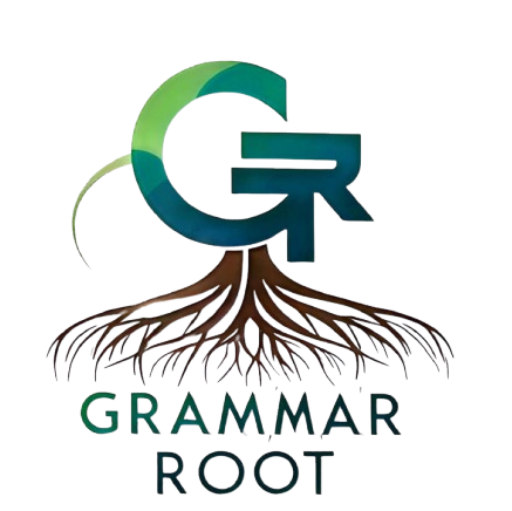Figurative language gives writing its spark. Without it, stories, speeches, and even everyday conversations would sound flat and lifeless. Two of the most commonly used tools in this space are metaphors and hyperboles. Yet many people mix them up. To truly understand how they shape communication, we need to dive deep into their meanings, uses, and differences.
This article explores Metaphor vs Hyperbole, their definitions, examples, and how you can apply them in your own writing.
What Is a Metaphor?
A metaphor is a direct comparison between two unlike things without using “like” or “as.” Instead of simply pointing out similarities, a metaphor fuses the two ideas together.
- Metaphor meaning: A statement that says one thing is another to highlight deeper connections.
For example:
- “Time is a thief.” → Time doesn’t literally steal, but this figurative expression suggests time takes things away just as a thief does.
When used well, metaphors clarify complex concepts. They make abstract ideas relatable.
What Is Hyperbole?
Hyperbole is deliberate exaggeration for emphasis or dramatic effect. Unlike metaphors, hyperboles don’t aim to merge two things into one meaning. Instead, they magnify reality far beyond its normal limits.
- Hyperbole meaning: To stretch truth so far that it becomes impossible, yet impactful.
For example:
- “I’m so hungry I could eat a horse.” → Obviously, nobody can devour an entire horse, but the exaggeration in writing communicates extreme hunger.
Metaphor vs Hyperbole: The Core Difference
Here’s the difference between metaphor and hyperbole in a nutshell:
- A metaphor connects two different ideas, saying one is the other.
- A hyperbole stretches reality with wild exaggeration.
Both fall under the umbrella of types of figurative language, but they function differently. Metaphors create new meaning through comparison in literature, while hyperboles intensify meaning through overstatement.
Metaphor and Hyperbole Explained Side by Side
To make it clear, here’s a quick literary devices comparison:
| Aspect | Metaphor | Hyperbole |
|---|---|---|
| Purpose | To equate two different things | To exaggerate for emphasis |
| Example | “Her smile was sunshine.” | “She smiled so wide it could light up a city.” |
| Effect | Creates vivid imagery | Adds drama or humor |
| Relation | Comparison in disguise | Extreme overstatement |
Metaphor Examples
Metaphors appear in everyday life, literature, speeches, and even emails. Here are some metaphor examples across contexts:
- “The classroom was a zoo.” → A noisy, chaotic classroom.
- “His words were a dagger to my heart.” → Hurtful words compared to a sharp weapon.
- “The world is a stage.” → Life compared to performance.
Scenario Example: Email with Metaphor
Subject: A Bright Star on Our Team 🌟
Hi Julia,
Your leadership during the project was a guiding light. The way you managed challenges was nothing short of brilliant. Our team truly shines because you’re part of it.
Best,
David
Here, the metaphor “a guiding light” connects leadership to illumination, showing clarity and direction.
Hyperbole Examples
Hyperbole examples often show up in storytelling, jokes, and casual conversations. They’re designed to grab attention.
- “This bag weighs a ton.” → The bag is very heavy.
- “I’ve told you a million times.” → Expresses frustration.
- “Her laugh could wake the dead.” → Highlights a loud laugh.
Scenario Example: Email with Hyperbole
Subject: You Saved the Day 🚀
Hey Marcus,
Your quick response yesterday was nothing short of heroic. Without you, the client would have waited forever. Seriously, you worked so fast it felt like you had ten hands.
Cheers,
Lena
The hyperboles “forever” and “ten hands” exaggerate speed and efficiency for dramatic effect.
Figurative Language Examples in Literature
Writers blend metaphors and hyperboles to enrich their storytelling. Let’s look at some figurative language examples:
- Shakespeare’s “Juliet is the sun.” → Metaphor.
- F. Scott Fitzgerald’s “I was within and without, simultaneously enchanted and repelled by the inexhaustible variety of life.” → Metaphor for duality.
- Roald Dahl’s “I shot past like a bullet.” → Hyperbole highlighting speed.
These creative writing tools add texture, imagery, and depth.
Word Tricks in Writing: Why These Devices Work
Both metaphors and hyperboles act as language techniques for expression. But why do they resonate so strongly?
- Metaphors make abstract ideas tangible. They help readers “see” feelings or concepts.
- Hyperboles create humor, drama, or emphasis by stretching boundaries.
Think of them as seasoning in food. Too little, and writing tastes bland. Too much, and it overwhelms. The key lies in balance.
How Metaphors Work in Writing
Metaphors help readers connect new ideas to familiar concepts. That’s why they’re powerful in teaching, business communication, and creative writing.
For instance, in a corporate email:
Subject: Fuel for Growth 🔥
Hello Team,
Our new strategy is the rocket that will take us to the next level. Every action you take adds fuel to this mission. Together, we’ll reach orbit.
Best,
Samantha
Here, the metaphor of a rocket illustrates momentum and ambition.
Using Hyperbole for Emphasis
Hyperboles thrive in informal communication, advertisements, and speeches where exaggeration grabs attention.
For example, in marketing:
- “The best coffee in the universe.”
- “Unbeatable prices you’ll never see again.”
Or in a motivational email:
Subject: You’re Breaking Records! 🏆
Hi Adrian,
Your performance this quarter is beyond belief. Honestly, you’ve done the work of ten people. Your dedication is so strong it could move mountains.
Keep soaring,
Michelle
Here, hyperboles amplify praise.
Differences in Figurative Devices
Let’s revisit comparing metaphor and hyperbole with practical clarity:
- Metaphors = subtle, symbolic, layered.
- Hyperboles = loud, dramatic, obvious.
Both are fun ways to express ideas, but they serve different tones.
Types of Figurative Language Beyond Metaphor and Hyperbole
To grasp their place, let’s look at other types of figurative language:
- Simile – Comparison using “like” or “as.” (“Her eyes sparkled like diamonds.”)
- Personification – Giving human traits to non-human things. (“The wind whispered secrets.”)
- Alliteration – Repetition of sounds. (“She sells seashells.”)
- Irony – Saying the opposite of what you mean. (“What lovely weather,” during a storm.)
Each serves its role, but metaphors and hyperboles remain two of the most widely used.
Figurative Expressions in Daily Life
We use figurative language casually without realizing:
- “My phone is dead.” → Metaphor.
- “I’m drowning in work.” → Hyperbole.
- “That plan is rock solid.” → Metaphor.
- “This will take forever.” → Hyperbole.
Everyday conversations prove these tools aren’t just for literature—they’re built into human expression.
Fun Ways to Express Ideas: Mixing Metaphor and Hyperbole
The beauty lies in blending them. Imagine writing an appreciation email:
Subject: A Star Performer 🌟
Hi Rachel,
Your dedication is unmatched. You’ve been the backbone of this project, and your energy is so strong it could power an entire city.
Cheers,
Daniel
Here, “backbone of this project” is a metaphor, while “power an entire city” is hyperbole. Together, they create a vibrant message.
NLP in Creative Writing: Why It Matters
Modern writing, especially online, relies on NLP keywords like metaphor definition with examples or hyperbole definition with examples. These terms make content searchable while helping readers learn. But at the heart, it’s still about word tricks in writing that convey emotion, humor, and clarity.
Final Thoughts: Mastering Metaphor vs Hyperbole
Understanding Metaphor vs Hyperbole gives you stronger control over your writing. Metaphors let you connect ideas; hyperboles help you magnify them. Both are creative writing tools that transform dull sentences into memorable expressions.
Whether you’re drafting an email, writing a blog, or preparing a speech, remember this:
- Use metaphors when you want clarity through comparison.
- Use hyperboles when you want emphasis through exaggeration.
When applied with care, they make words leap off the page, turning plain communication into art.

Johan is an professional & experienced blogger passionate about language and writing on Grammar root. He shares his expertise in grammar, punctuation, and effective communication, making complex rules simple and accessible for readers. With a knack for clear explanations and engaging content, Steel aims to help others master the art of language.

